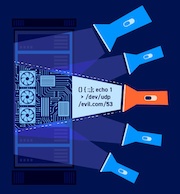ProfessionalCommunity Edition
Scope settings
-
Last updated: December 16, 2025
-
Read time: 1 Minute
The Scope settings page enables you to configure the following:
The Scope settings are project settings. They apply to the current project only.
Target scope
These settings determine which hosts and URLs are in scope for your current project. This changes the behavior of tools throughout Burp.
For more information, see Setting the target scope
Out-of-scope request handling
These settings determine whether Burp issues out-of-scope requests.
Select Drop all out-of-scope requests to prevent Burp from issuing any out-of-scope requests. With this setting enabled, out-of-scope outgoing requests are dropped by Burp even if the browser explicitly requests them.
You can select how Burp defines an out-of-scope request:
- Use suite scope - Select this option to use the suite target scope to determine which requests to drop.
- Use custom scope - Select this option to define a custom scope to determine which requests to drop.
Related pages
For more information on setting the suite-wide scope, see Setting the target scope.


